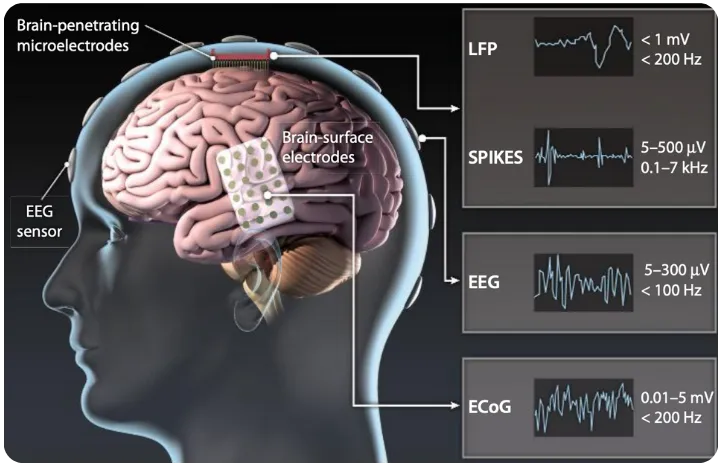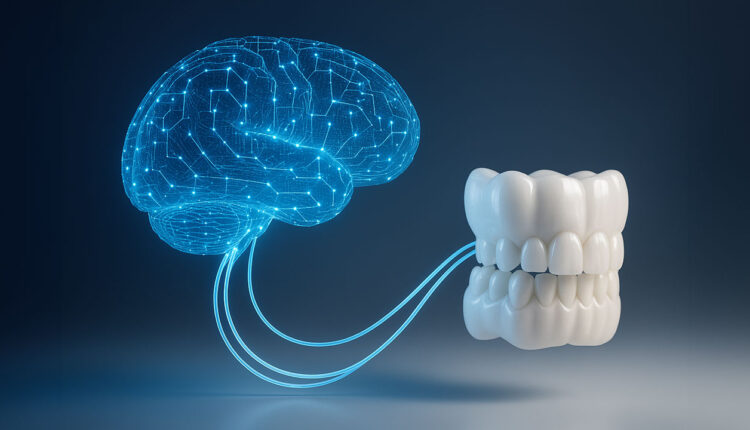The convergence of neuroscience, artificial intelligence, and material science is pushing humanity toward a future once confined to science fiction: a world of seamless brain-computer interfaces (BCIs). These devices hold the promise of restoring motor function to the paralyzed, returning sight to the blind, and even augmenting human cognition. However, the fundamental barrier to this future has always been a material one: how do we create a safe, stable, and highly conductive bridge between rigid electronics and soft, living brain tissue? A recent breakthrough in materials engineering is poised to shatter this barrier, offering a new path forward for neural implants that are dramatically safer, more reliable, and higher-performing. This development isn’t just incremental; it represents a paradigm shift that could accelerate the entire field of bioelectronics and redefine our relationship with technology.
The Material Science Challenge of the Human-Machine Merge
For decades, the quest for a perfect neural interface has been a story of compromise. The human brain is a delicate, dynamic environment, while the electronics designed to interface with it are typically hard, static, and foreign. This fundamental mismatch is the source of the most significant challenges in neurotechnology.
Why Traditional Materials Fall Short
The first generation of neural probes, and many still in use today, rely on traditional electronic materials like silicon, platinum, and iridium. While these materials are excellent conductors, their rigidity is a major drawback. The brain is soft and constantly in subtle motion within the skull. A stiff, sharp implant creates a mechanical mismatch that the body recognizes as an injury. This triggers a foreign body response, leading to the formation of glial scars—thick layers of scar tissue that encapsulate the implant. This encapsulation effectively insulates the electrodes, degrading the signal quality over time and ultimately leading to device failure. This chronic inflammation and signal decay have been the primary obstacles to creating truly long-term, stable BCIs.
The Promise of Conductive Polymers: Introducing PEDOT:PSS
To overcome the mechanical mismatch, researchers turned to soft, flexible materials, with a conductive polymer known as PEDOT:PSS emerging as a frontrunner. PEDOT:PSS, or poly(3,4-ethylenedioxythiophene) polystyrene sulfonate, is a remarkable material that possesses many of the ideal properties for bio-interfacing. It is mechanically flexible like soft tissue, reducing physical stress on the brain. Crucially, it exhibits mixed ionic-electronic conductivity. This means it can conduct not only electrons, like traditional wires, but also ions, which are the charge carriers in the body. This property allows it to “speak the language” of the nervous system more effectively, enabling a much more efficient and lower-noise transfer of signals between neurons and electrodes. This has made it a key material in the latest Health & BioAI Gadgets News, powering everything from advanced sensors to experimental therapies.
The “Toxic Compromise”: Enhancing Performance at a Cost
Despite its promise, raw PEDOT:PSS has a significant limitation: its conductivity is often too low for the high-fidelity recording of subtle neural signals. To solve this, scientists developed methods to boost its performance by adding secondary dopants—essentially chemical additives. Solvents like dimethyl sulfoxide (DMSO) or ethylene glycol (EG) were mixed into the PEDOT:PSS solution. These additives would restructure the polymer, dramatically increasing its conductivity. However, this created a “toxic compromise.” These solvents are cytotoxic, meaning they are harmful to living cells. Over time, they can leach out of the implant into the surrounding brain tissue, causing inflammation and cell death. Furthermore, this chemical enhancement often comes at the cost of long-term stability, as the material’s properties degrade when exposed to the warm, saline environment of the body. This inherent trade-off between performance and safety has been a persistent bottleneck in the field of Neural Interfaces News.
A Paradigm Shift: Heat-Treating for Purity and Performance
The latest breakthrough completely sidesteps this toxic compromise by replacing chemical additives with a simple, elegant physical process: heat treatment. This innovation, a focus of recent AI Research / Prototypes, fundamentally alters the material’s properties at the nanoscale, unlocking its full potential without introducing any harmful substances.

The Science of Thermal Annealing in Polymers
The new method involves a post-fabrication process called thermal annealing. After the PEDOT:PSS electrode is created, it is subjected to a carefully controlled heating and cooling cycle. This process provides the thermal energy needed for the polymer chains to reorganize themselves into a more optimal structure for conductivity. In its standard state, the conductive PEDOT chains are often entrapped by the insulating PSS chains, hindering the flow of electrons. Thermal annealing induces a phenomenon known as phase segregation. The insulating PSS components separate from the conductive PEDOT domains, which then align into highly ordered, crystalline pathways. Imagine untangling a jumbled mess of wires to create a perfectly straight, efficient superhighway for electrical current—that’s what annealing does for PEDOT:PSS at the molecular level.
Quantifying the Leap Forward: Performance Metrics
The results of this solvent-free approach are staggering. Studies have shown that thermal annealing can increase the conductivity of PEDOT:PSS by several orders of magnitude, often achieving performance levels comparable to or even exceeding those of chemically treated versions. For example, some research indicates a threefold or greater increase in conductivity. More importantly, this high performance is achieved alongside a dramatic improvement in stability. Because there are no toxic additives to leach out, the material maintains its structural and electrical integrity for much longer periods when submerged in physiological solutions. This dual improvement in conductivity and stability is the holy grail for long-term neural implants. This development is critical for the next generation of AI Edge Devices News, as the brain itself is the ultimate edge computing environment.
From Lab Bench to Life-Changing Devices
This new method also simplifies the manufacturing process, making it more repeatable, scalable, and cost-effective. It eliminates the complex and sensitive step of handling toxic solvents, streamlining production and reducing safety concerns. This makes the technology more accessible for both research and eventual commercial production of advanced medical devices.
Beyond the Brain: A Ripple Effect in AI and Smart Technology
While the most immediate impact of this material breakthrough is in the realm of clinical neurotechnology, its implications extend far beyond, potentially influencing the entire landscape of AI-driven gadgets and smart systems. A safe, high-bandwidth channel to the nervous system is a foundational technology that will unlock countless other innovations.
Next-Generation Neural Interfaces and Neuroprosthetics
The primary application is, of course, in medicine. High-density, stable electrode arrays made from this enhanced PEDOT:PSS could lead to BCIs that allow individuals with paralysis to control robotic limbs with unprecedented dexterity and sensory feedback. This has huge implications for Robotics News and the development of AI Personal Robots that can serve as extensions of the human body. It could also power sophisticated retinal implants to restore vision or cochlear implants with far greater nuance. In the world of AI for Accessibility Devices News, this is a game-changing development.
The Future of Wearables and Bio-Integrated Sensors

The same principles of creating biocompatible, high-performance conductors can be applied outside the brain. This material is perfect for next-generation “e-skin” and smart tattoos that conform to the body for continuous, unobtrusive health monitoring. Imagine wearables that don’t just track heart rate, but also muscle electrical signals (EMG) or even biochemical markers in sweat. This directly impacts the future of Wearables News, AI Fitness Devices News, and AI Sleep / Wellness Gadgets News by providing richer, more accurate data streams to fuel their AI algorithms.
Connecting to the IoT and Smart Environments
Looking further ahead, a mature neural interface could become the ultimate input device for our digital world. Imagine controlling your smart home with a thought. This concept bridges Neural Interfaces News with Smart Home AI News. A user could seamlessly interact with AI Assistants News, adjust AI Lighting Gadgets News, or operate Smart Appliances News without lifting a finger or speaking a word. The high-fidelity data from the brain could provide a level of contextual awareness that current smart systems can only dream of, a key topic in AI Sensors & IoT News.
Navigating the Path to Clinical Reality
Despite the excitement, the journey from a laboratory breakthrough to a widely available clinical treatment is long and fraught with challenges. This new material is a critical piece of the puzzle, but it is not the entire solution.
From Prototype to Patient: The Regulatory Gauntlet

Any device intended for implantation in the human brain must undergo years of rigorous testing. Long-term in-vivo studies in animal models are required to prove not just efficacy but, more importantly, safety over the device’s entire lifespan. The material must be proven to be non-toxic, non-inflammatory, and mechanically stable for years, if not decades. Navigating the complex regulatory pathways of agencies like the FDA is a monumental undertaking that requires vast resources and meticulous data.
Best Practices for Material Integration
For engineers and researchers working with this new method, precision is key. The success of thermal annealing depends on exact control over temperature, ramp rates, and duration. The compatibility of the PEDOT:PSS film with the underlying substrate and the encapsulation layers used to protect the final device are also critical factors that must be optimized to prevent delamination or failure. These best practices will be essential for creating robust and reliable devices.
Remaining Hurdles: Power and Data
Even with the perfect electrode material, two other major engineering challenges remain: power and data. How do you safely and wirelessly power a device deep inside the brain? And how do you transmit the massive amounts of data generated by thousands of electrodes out of the body in real-time? Solving these challenges will require innovations in microelectronics, wireless communication, and energy harvesting, likely involving synergy with advancements seen in AI Phone & Mobile Devices News, which are driving progress in miniaturized, low-power components.
Conclusion: A Foundation for the Future
The development of a solvent-free, heat-treatment method to enhance the performance and stability of PEDOT:PSS is more than just an incremental improvement. It is a foundational breakthrough that removes one of the most significant and persistent roadblocks in the field of neural engineering. By eliminating the need for toxic chemical additives, it paves the way for a new generation of neural interfaces that are inherently safer, more stable, and capable of higher performance over the long term. This innovation will not only accelerate the development of life-changing therapies for neurological conditions but will also serve as a catalyst for a host of future technologies, from advanced bio-integrated wearables to the ultimate smart control systems. We are witnessing a key moment where material science is laying the groundwork for a future of deeper, safer, and more meaningful integration between humanity and technology.










